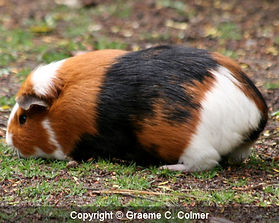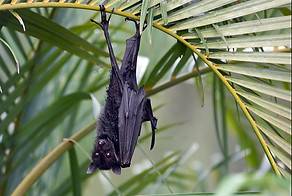Overview
The H. sapiens BID is highly conserved, involving 39 orthologues according to the OMA database [1] as of February 2017. Below are the peptide sequences of a selection of orthologues with links to their sequences in FASTA format.





FASTA
>NP_001073295.1 BH3 interacting domain death agonist [Danio rerio]- Zebrafish
MDFNRNFDHIPHTSLVLLSFLDQKDCQNGESGRVFDYREDNLSTNHIDSDGDIETDGQSPPATYRDLLHELQHEVQPGLSVNAEEARAAREMAAELIRIADLLEQSVLSQAAESLTKKLRSSQEQVWASHLSKGVQTLLQHVAAAKEFKKELVEMAFTFMLMKTVCERTPDFLFGLYGTVVQFFGSN
>NP_073175.1 BH3-interacting domain death agonist [Rattus norvegicus]- Brown Rat
MDSEVSNGSGLGAEHITNLLVFGFLRNNDRDFHQELEVLGQELPVQVYLEGDREDELQTDGSRASRSFYHGRIEPDSESQDEVIHNIARHLAQAGDELDHSIQPTLVRQLAAQFMNGSLSEEDKRNCLAKALDEVKTSFPRDMENDKAMLIMTMLLAKKVASHAPSLLRDVFRTTVNFINQNLFSYVRDLVRNEMD
>AAC71064.1 BID [Mus musculus]- House Mouse
MDSEVSNGSGLGAKHITDLLVFGFLQSSGCTRQELEVLGRELPVQAYWEADLEDELQTDGSQASRSFNQGRIEPDSESQEEIIHNIARHLAQIGDEMDHNIQPTLVRQLAAQFMNGSLSEEDKRNCLAKALDEVKTAFPRDMENDKAMLIMTMLLAKKVASHAPSLLRDVFHTTVNFINQNLFSYVRNLVRNEMD
>NP_001089063.1 BH3 interacting domain death agonist S homeolog [Xenopus laevis]- Frog
MSLNVKTILVSYLEIDIKNHKDEFWEELSWFAREEGKLVAQMGRNDGDLETDGNVQFRSTGTIVYEGEAEVDEELCRRIATQLAEMGDKLEREMRIKPEVVNGIVDALLNHTLNEEYLAATVQSLVQTAPPGVEQELMSVAIALILTKKAVTNVPSLLHNICCTTTHFIERNYRACLERLARQR
>ELK38576.1 BH3-interacting domain death agonist [Myotis davidii]- David's myotis
MYLGRMFNPLLGRIPEGYPYRDPAPTLYVCVSPSSLLPWTRVSRNPVKSPAACAMDPKGSNGSGLQDERITDLLVFGFLQNCSNYNFHKELQVLGHDLSVPACLWENHDDELQTDGNQYSHFVLESRETDSESQDEIIQNIARQLAHIGDRMDRSIPPRLVNHLAIQFMNGNLSEEERRECLAAALEQVMHTYPKDMEKEKTMLMLTMLLAKKVADHTPSLLHDVFRTTVNVINQNLLTYVRNLVRNVRTSDVSSLAFH
>ELK02625.1 BH3-interacting domain death agonist [Pteropus alecto]- Black flying fox
MGEPVSCCFPVCPHAPGHTQQWADFLPDTPSNGQTRPGSRRVEVQPVAVGNCQAVLLPWTPASQKPVELPAACAMDPKISNGARLQHEHITDLLVFGFLQNCCNSNFHKELKALGHDLPVPAYPREDYDDELQTDGNRCSHIVLEREETESENQEEIIQNIARQLAQIGDRMDSRIPPRVVNYLAMEFMNVDLSEEDRKDCLSAALEEVMKTYPKDMEREKTMLMLTMLLAKKVADHTPSLLRGVFHTTVNFINQNLLTYVRNLLRNVRTSDVSSLASH
>NP_001238867.1 BH3-interacting domain death agonist [Canis lupus familiaris]- Dog
MESKVSNGSGPQDERITNLLVFGFLQNCSNYNFHEELELLGRELPVPAYLKEDYDDELQTDGNRCSYFLDGGARDSESQEEIIQDIARQLAQIGDRMDHSIHPGLVNNLAMQFMNVNLSEEDRRKHLAAALEQAMQTYPKDMEKEKTMLMLAMLLAKKVADHTPSLLRDVFHTTVNFISQNLLTYVRNLVRNEMD
>EHB13699.1 BH3-interacting domain death agonist [Heterocephalus glaber]- Naked Mole Rat
MDAKVGNGAGFRDESITNLLVYSFLHTRNNSNFHPELEALGQELPVGVCLEADHDDELQTDGNRGSRLLYGGRREGDSENQEIIHSIAWHLAEIGDELDRSIQPGLVNQLAMHFRNPGLSEEGRRHYLAATVEEVMQTYATDMEQEKAKLITAMLLVRKVADHTPSLLRDIFHTTVNFINQNLLTYMRDLIRNGVQLPFVCRVSVFMALPKKSQPAFKSQGASVSWALKEVIQASTNRKVNINLKSGVNQAELLEGGQPEKIPRQLSPTTISKRSKGRVSQQSVLTRHQTLVGSEGLGPSKLCEGPGHLR
>XP_003461816.2 PREDICTED: BH3-interacting domain death agonist [Cavia porcellus]- Guinea Pig
MDAKVGNGAGTRGELVTDLLVFGFLCSRDNSNFHSELKALGQELPGRPEVDHDDELQTDGNRLSHFHGGRREADSESQEELIQHIASQLALIGDEMEHKIQASVVHQLSTQLRDSSLTPEGRRHCLAATLGEVMQTCPADVEQEKAVLIMTMLLARKVADHTPRLFRVVYDTVVDFINQNLLTYVRDLVRNERD
>XP_010589079.1 PREDICTED: BH3-interacting domain death agonist [Loxodonta africana]- Elephant
MALTVSNGSGLQNERITNLLVFSFLKNCPSCHFHEELAELSYELPLPAHLREEYDELQTDGNRNSHFHFQSFQGRLEQDSGSQEEVIQSIAERLAQIGDEMESQVHPSLVQNLARQFMDRNLSEEDRRKHLATAVDRVMQTCLLDMELEKKKLMLTMLLAKKVADHMPSLLRDVFRTTVNFINQNLLTYVRNLARNEMD





MSA results of orthologues
We ran a MSA comparing (Fig. 1) the BID amino acid sequence of the above mentioned species with isoform 2.
Important note: We kept the spaces between amino acids in the conserved FASTA sequence to maximise the alignment. Otherwise, the algorithm would not match up certain sequences because they might be too far apart.
The BH3-B domain does not seem to be present in the zebrafish sequence. The amino acids highlighted black (-EL--LG-E) are greatly conserved regions of this domain and hence are likely to play a vital role in the functioning of the domain. The penultimate amino acid in this domain is less conserved with arginine (R) being the preferred amino acid as suggested by the Clustal Omega algorithm. The final amino acid, glutamic acid (E), differs for the black flying fox and bats (Myotis davidii) where aspartic acid (D) is replaced. Aspartic acid is a negatively charged amino acid, as is glutamic acid; therefore, we may conclude that this region must consist of a negatively charged amino acid.
The BH3 domain is present in all the species analysed, including zebrafish. Again, the highly conserved regions, highlighted black, show that these amino acids in this domain are strongly involved in its function. These amino acids are predominantly hydrophobic (notice I, A, L, M’s). Unsure of exactly what was conserved structurally, we decided to run the consensus sequence from this MSA result against the protein sequence of 2BID, to determine exactly what was conserved and possibly why.
FASTA
GSMDCEVNNGSSLRDECITNLLVFGFLQSCSDNSFRRELDALGHELPVLAPQWEGYDELQTDGNRSSHSRLGRIEADSESQEDIIRNIARHLAQVGDSMDRSIPPGLVNGLALQLRNTSRSEEDRNRDLATALEQLLQAYPRDMEKEKTMLVLALLLAKKVASHTPSLLRDVFHTTVNFINQNLRTYVRSLARNGMD
>Conserved
Md--vsngsgl--ehit-llvfgfL-----c-n--fh-el--lgrelpv-a----d-ddelqTDGnr-sr----------e-dsesq---------eeiir-iAr-LaqigD-mdr--si-p-lvnqla-qfmn-slseedrr--Laaald-vmqtf--pkdme-ek-mliitmlLakkvadhtPsllrdvfrTtvnfinqNlltyvr-lvrn-md
MSA results of conserved
We ran another MSA, this time comparing the conserved sequence across species with the amino acid sequence of 2BID, using the FASTA sequences, in order to identify what exactly was conserved.

Fig. 2. MSA of the conserved sequence across different species and 2BID. Stars indicate fully conserved amino acids while dots indicate different but chemically similar amino acids.
The results show (Fig. 2) that quite a lot is conserved and because we have previously annotated this, we didn't feel the need to annotate the MSA results again as we would be left with the same conclusion and hypothesis. So, instead, we wrote down what was conserved in the context of the secondary structure of BID (Table 1) and started to look at the structure of the protein.
Please go here for those results.

Table 1. Species Comparison. Protein conservation between species. Areas of high conservation are noted with an asterisk.

